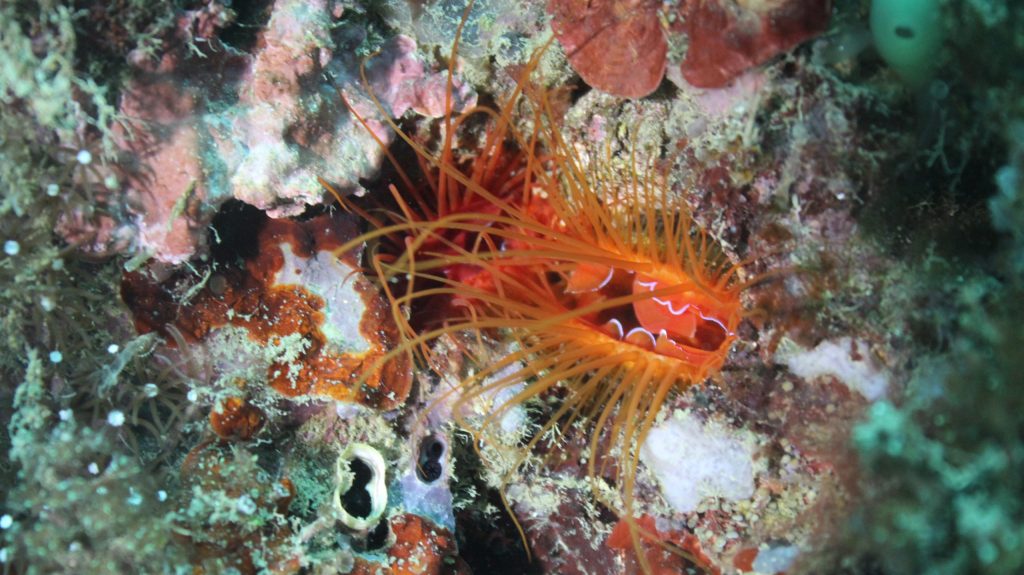A blog post by Dr. Lindsey Dougherty, Ocean First Institute’s Advisory Board Member and Kaela Loriz, OFI Communication and Outreach Intern.
We jump at every opportunity we get to share our knowledge and love of the ocean, but not all marine creatures get the attention they deserve. Today, we will focus on the strange and beautiful disco clam, Ctenoides ales. These groovy bivalves of the Indo-Pacific get their name from the flashing light display that they put on. We reached out to Dr. Lindsey Dougherty for her expertise on the species!
Species Name: Disco Clam, Ctenoides ales
Species Habitat: Indo-Pacific
Predators: fish, cephalopods, crustaceans, and predatory snails
Prey: Plankton, <500 microns in size
Biggest Threats: Overcollection and misidentification

Ctenoides ales. Photo Credit: Lindsey Dougherty
Lindsey began studying the disco clam while completing her Ph.D. at University of California, Berkeley. She was driven to understand how and why their flashing occurs. In most luminescent species, flashing is used as a lure for mates or food, or as a means of communication. Lindsey was quickly able to rule out the luring mechanism option, as the tiny plankton that the clams eat cannot see the lights or navigate their way to them. Additionally, the clams – even with their ~40 eyes – cannot see the flashing of a potential mate. Ultimately, Lindsey’s research suggests that the disco clams’ flashes – the result of reflective silica along the fluttering edges of the clam – serve as warnings to their predators, such as fish, cephalopods, crustaceans, or whelks. In her field work, Lindsey has found that each type of predator leaves unique markings on the shells of the disco clam. These predators would be wise to heed those vibrant warnings, as the clam’s flesh is not as delicious as it may appear to be.

Photo Credit: Lindsey Dougherty
While we like to consider ourselves positive thinkers at Ocean First Institute, it’s important to understand the threats to a species if we want to help protect it. According to Dr. Dougherty, the biggest threat to these bivalves is overcollection for aquariums. Complicating the problem is the tendency to misidentify this relatively rare species, which is making it increasingly difficult to determine how many are being collected every year.

Ctenoides scaber. Photo Credit: Lindsey Dougherty
When Lindsey isn’t busy diving in the Galapagos, you can find her working at the Li Lab at CU Boulder, where she is studying the disco clam’s Caribbean cousin, the red flame scallop, Ctenoides scaber. She is trying to discover if similar animals use bad-tasting flesh to deter attacks from predators. Dr. Dougherty is continually amazed by the spectrum of species and colors she finds during her Caribbean dives and is hopeful that her research with these species will give way to conservation efforts regarding the responsible and sustainable management of the collection of ocean critters.

